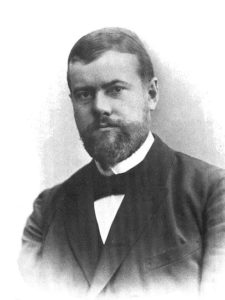After Karl Marx, Weber work regarding stratification was related to class classification. He divided society by majorly three facts viz. power, class, and status. These three terms were also called three components of stratification in which people belonging to same class enjoys the same lifestyle and are provided with the same amount of opportunities for growth. For example, people belonging to the same group of industrialist share same market value in the society.

Max Weber was although having a different point of view from Marx. He insisted that the political and social division was mainly based on the account of production rate of deserving people, whereas Marx has seen class division as capitalism and iron cage view. Weber particularly stated that control was in hand of those people who can earn the maximum profit and production. The people who could not afford much in production were put up in the situation of survival of the best. Weber supported Marx ideas on some crucial situation but he exercised his ideation in an analytical way. He stated that men in the society will always thrive for power and thus it becomes the reason for social stratification. But on the other hand, he did not support the ill-treatment of poor peasants.
Marx presented the society in capitalist view as the managers, administrators; landlords took the upper position in the society whereas peasants and tenants were lower class people. But Weber presented the categorization of society in four ways:-
- The propertied upper class– They were the upper-class people who had an immense amount of property which was their way of collecting revenues from tenants. For example, the landlords collected revenue from the tenants when they gave a portion of their land to them.
- The propertyless white-collar workers- They were the skilled labors who sat behind the tables to earn a proper salary. Mostly middle-class people were seen doing the white collar jobs. Comparing with the present situation, workers working in MNC’s or power plants can be termed as white collar seeking employees.
- The petty bourgeoisie– They were belonging to lower class people. Marx was in the favor of highlighting their declining position in the society.
- The manual working class– They can be called as the lower class medium also popularly known as blue collar jobs at that time. They had to do work manually and were paid less than the necessity.
Often class and status were taken as one form of stratification but Weber was seen as differentiating major factors of social stratification as the class, status, and power.
- Class– Conflict theories have explained how the stratification was gobbling up the chances of weak sections of society into becoming better. Thus the class where Weber explained the economic condition has stratified society into four types discussed above.
- Status– In this section, Weber explained that maybe the community does not share same economic level, but due to prestige and position in the society, they belong to the same status.
- Power– In the context of power, it was dealing with political powers. For example, in the time of revolutions, Churches were holding an immense position in the society. They had the power of decision making.
I am Prerna Jha, pursuing mechanical engineering from KIIT, Odisha, But I Love to Read and Write Sociology Related Concepts and Theories. I have done schooling from MVM School, Bilaspur. I have interest in writing love stories or any specific genre. I pursue a great interest in quilting. Right now I am an aspiring writer who writes for various pages. I have participated in many social events. I am a social animal who likes to have maximum participation in any fest.
